The Self, Science, and Religion
Anna F. Lemkow
Originally printed in the MARCH-APRIL 2007 issue of Quest magazine.
Citation: Lemkow, Anna F. "The Self, Science, and Religion." Quest 95.2 (MARCH-APRIL 2007): 47-51.
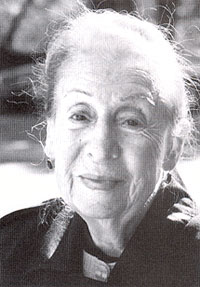
What has become apparent to me is that much of the turmoil of the modern world arises from the bitter conflict between the two fields that have come to be known as modern science and religion and how they relate to Self. The bridging of these two great domains would be a boon for humanity and by the evidence shown, human consciousness is inexorably, if unevenly, evolving toward this sought after integration.
How We Define the Self
The common understanding in many fields of knowledge is that the nature of our Self is composite; that is, the different constituents of our makeup correspond with and serve as our means of contact with different levels of reality.
Huston Smith, renowned explorer of comparative religion, displays in his book, Why Religion Matters, an extraordinary mandala that depicts this universal vision of the relationship between reality and selfhood. Smith's mandala includes all the major religious traditions: namely, Hinduism, Buddhism, Christianity, Judaism, Islam, and the Chinese complex of religions. The mandala indicates the four major levels of reality and the corresponding four levels of selfhood for each of them. In Christianity, the four levels of selfhood—body, mind, soul, and spirit—are correlated with nature, angels or demons, Christ, and Godhead, respectively. Hinduism, to take another example, posits the gross body, the subtle body, the causal body, and atma or turiya which correspond respectively to prakriti, deva lokas, Saguna Brahman (God attributes) and Nirguna Brahman (ultimate infinite, formless, Godhead)—the latter two levels of deity reflect the exoteric and the esoteric stream, respectively, found in each world religion.
Concerning the nature of reality, Smith points out that its "domains are not identical in worth. . . Being infinite, the Godhead is more complete than God . . . who in turn is more important than [this world] " (225). The mandala accords, not surprisingly, with the millennial idea of the Great Chain of Being—the idea that reality is a hierarchy of interwoven levels of consciousness reaching from matter to body to mind to soul to the ultimate divine source.
The Anatman or no-self doctrine of Buddhism is illuminating. What it maintains is that the small or personal ego is impermanent—that it has no abiding reality—that it is empty of any self-nature. John Engler, who is a Buddhist and a trained psychologist, states in Paths Beyond Ego that: "in both psychologies the sense of being the same "self" in time, in place, and across states of consciousness is conceived as something that is not innate in personality, not inherent but that evolves developmentally. . . [It] is actually an internalized image, a composite representation, constructed by a selective and imaginative 'remembering' of past encounters with the object world. . . [it] is viewed as being constructed anew from moment to moment" (118).
Mahayana Buddhism, unlike Theravada Buddhism, while similarly denying the small ego, strongly affirms that a true self is discoverable, though only after a prolonged and painful inner search. Robert Thurman of Columbia University (who studied Tibetan Buddhism with the Dalai Lama) describes the discovery as liberating. It liberates one from the need to shore up the small ego, the false entity and its false pretensions, and from the need to be somebody instead of just being. Thurman characterizes the true self as boundless and intimately connected to the entire universe.
Lama Anagarika Govinda, a gifted expositor of Tibetan mysticism, stated in Creative Meditation and Multi-Dimensional Consciousness: "When the Buddha put the annata-idea in the center of his teaching he took the decisive step from a static to a dynamic view of the world, from an emphasis on "being" to an emphasis on "becoming," from the concept of an unchangeable, permanent "I" (ego) to the realization of the interdependence of all forms and aspects of life and the capacity of the individual to grow beyond himself and his self-created limitations" (6).
Interestingly, both Buddhism and contemporary psychoanalysis study the self but they study two different levels of the self. The goal of both is the easing of human suffering, yet for Buddhism this goal is radical transformation of consciousness, while for psychoanalysis the aim is to eliminate neurotic suffering that may and often stems from early childhood traumas and distortions. Each system duly has its own method. Buddhism advocates meditative practice, while psychoanalysis tries to strengthen the ego. (Paradoxically, the personal ego—that dubious or false entity—must nevertheless be strengthened before it is reduced to size.) The two systems are complementary.
Buddhist Theosophist, Christmas Humphreys distinguishes three main levels of selfhood in Studies in the Middle Way: Atma—the SELF—which shines on all and is the property of no one; the Self, which moves from life to life—a continuous, complex, changing flow—"a becoming, a ceaseless growth, an endless process of becoming what it really is" (47), and the self, the personality which "acquires experience through the five senses and the mind, and therefore provides a workshop for the growth of character" (46). The acquired experience is absorbed by the Self and is then stored in memory. Another way this configuration has been interpreted is thus: the SELF is both the (causal) top rung of the ladder in the spectrum of consciousness and that of which all the rungs are constituted.
H. P. Blavatsky remarked in The Key to Theosophy that the SELF or Higher Self, as she called it, can never be objective for it is Atma, which is really Brahma, the Absolute, and is indistinguishable from it. Blavatsky refers to it at times as "the God within us," and as "our Father in Secret." She also borrows the term "oversoul" from the great American transcendentalist philosopher, Ralph Waldo Emerson. It occurs, notably, in the Proem to The Secret Doctrine: "The Secret Doctrine teaches...The fundamental identity of all Souls with the Universal Oversoul, the latter being itself an aspect of the Unknown Root. . . " (13).
Ken Wilber writes in his book Sex, Ecology, and Spirituality: The Spirit of Evolution: "In philosophy a general distinction is made between the empirical ego, which is the self insofar as it can be an object of awareness and introspection, and the Pure Ego or transcendental Ego which is pure subjectivity (or the observing Self), which can never be seen as an object of any sort. In this regard, the pure Ego is virtually identical with what the Hindus call Atman or the pure Witness that itself is never witnessed—is never an object—but contains all objects in itself" (227).
Psychologies of East and West allude to the process of decentering from the empirical ego. Wilber, a Zen Buddhist, remarks that the more we decenter from that ego, the closer we approach "an intuition of the very Divine as one's very Self . . . . The completely decentered self is the all-embracing Self (as Zen would say, the Self that is no-self)" (231).
Some of us today have begun to de-center from the personal self or the small ego to some degree. When we stand back and look at ourselves somewhat objectively—we notice negative emotions and obsessive concern with ourselves—i.e., we begin to notice a kind of I/me divide.
A related perception that some of us have is that one's truer identity, whatever it is, is scarcely captured in any conventional way, e.g., by such data as place and religion of birth, skin color, sex, address, occupation, affiliations, and any other personal attributes. Using myself as an example, I am white, female, of Russian-Jewish extraction, a United States/Canadian citizen, a planetary citizen, a life member of the Theosophical Society, but I often feel that I am somehow different from and also more than the sum of these personal attributes.
It is not, I believe, that our personal particulars are insignificant. On the contrary, they are potent and dynamic. They are the rich soil of our present incarnations. Moreover, it is the unique combination of personal attributes that makes each individual unique. No one could be mistaken for someone else no matter how much change they undergo in body and mind during the course of a lifetime. And yet, none of one's personal attributes are absolute.
Significantly innumerable individuals across time and culture have reported having a spontaneous glimpse of a Self totally unrelated to their biographical history. I have experienced such a glimpse at least once; I felt a oneness with everything and everyone, a blissful sense of total self-acceptance as well as an acceptance and love of everyone else. I wish to not forget this peak experience because it is an illuminating peek at my true nature.
Modern Rationalism: The Self Dumbed Down
We know that evolution is an incontrovertible fact; even just how it happened and how it proceeds are a matter of controversy. Its course appears unpredictable. Take what happened to the notion of Self in recent centuries by a passage from The Passion of the Western Mind by the historian Richard Tarnas:
Science replaced religion as preeminent intellectual authority, as definer, judge, and guardian of the cultural world view. Human reason and empirical observation replaced theological doctrine and scriptural revelation as the principal means for comprehending the universe. Conceptions involving a transcendent reality were increasingly regarded as beyond the competence of human knowledge. While modern rationalism suggested and eventually affirmed and based itself upon the conception of man as the highest or ultimate intelligence, modem empiricism did the same for the conception of the material world as the essential or only reality—i.e. secular humanism and scientific materialism, respectively. (286)
The advent of modern science was a watershed in human history that ushered in a wealth of new truths and discoveries. In its wake, the self-evolution of consciousness paradoxically seemed to take a regressive turn—i.e., obscuration, at least for many and for the time being, of the transrational (transpersonal, contemplative, mystical) levels of consciousness.
Scientific materialism states that matter-energy is the only reality, that only matter exists and that consciousness is merely an epiphenomenon that somehow issues from the physical brain. If there were no brain, the argument goes, there would be no such thing as sentience or consciousness. Scientific materialism is still the official view of modern science, notwithstanding that it is scientifically obsolete. It was, in effect, refuted as early as the twentieth century upon the discovery of the dynamic nature of matter, whereupon the cosmos ceased to look like a dead machine and began to look instead like a great thought or like mindstuff. Science could no longer claim to know matter. The mystery has deepened—even a subatomic particle can display instant correlation or synchronization of events over long distances; the finding known as non-locality.
Yet self-evolution continues. At the frontiers of science, theorists are vigorously searching for unified theories—in all disciplines. There are some theories that promise or claim to unify matter, life, and mind. But the materialistic/mechanistic view remains entrenched among many conventional scientists and other mechanistically-minded thinkers.
In a recent article on the Op-Ed page of the New York Times, Daniel C. Dennett, the well-known American philosopher, argues passionately that while nature displays "breathtakingly ingenious designs," these have all, including the development of the eye, been generated by processes that are themselves without purpose and without intelligence. The long-inculcated mechanistic/materialistic view, with its disavowal of purpose in nature, can apparently produce downright irrationality even in some philosophers although it is only rational to see machines as devoid of rationality! Nature in fact displays countless and remarkable examples of purpose and a number of examples are cited in my book, The Wholeness Principle: Dynamics of Unity within Science.
A widely influential "ism" related to empirical science that scientists do not necessarily claim is scientism. Scientism holds that what science does not discover is not true. As Huston Smith remarks in The Way Things Are, this stance "reduces the stature of the human self. The highest reaches of humanity are beheaded, you might say, by a single stroke of the scientistic sword" (270). Smith calls scientism "tunnel vision." He documents its pervasiveness in academia. Wilber often expatiates on what he calls flatland (reflecting the absence of the vertical dimension of consciousness). Plato's metaphor, remember, was the cave.
Another "ism" we can look at is secular humanism. According to Frederick Edwords of the American Humanist Association, in his article "What Is Humanism?" there are many types of humanism, including cultural, secular, and religious humanism. All types of humanism place reliance alone on "human means for comprehending reality . . . [making] no claims to possess or have access to supposed transcendent knowledge." Religious humanism, states Edwords, regards religion as "functional," (i.e., pragmatic)—it "serves the personal and social needs of a group of people sharing the same philosophical world view." "Secular and Religious humanists both share the same worldview and the same basic principles." Edwords quotes the definition of modern humanism of Corliss Lamont, its chief proponent: "a naturalistic philosophy that rejects all supernaturalism and relies primarily upon reason and science, democracy and human compassion."
While secular humanism is greatly superior to pure mechanism, some strains of it lack awareness of the Self and its incomparably richer transrational experience. Yet, secular humanists or modern rationalists seem to constitute the major segment of the population of the Western world. Many scientists fall into this category, as do many academicians, and liberals.
Another prominent "ism" of our time is of course religious fundamentalism. Islamic fundamentalism is resurging strongly just now. Common to religious fundamentalists, whether Judaic, Christian, or Muslim, is the proclivity to stigmatize their opponents by labeling them as apostates from the one true way. In reality, this deeply polarizing phenomenon often represents tribal strife over material resources and power rather than over religion. (Is loving to hate others for the love of God consistent with religion?) On the other hand, scholars point out that fundamentalism is the very opposite pole of secularism, and that these two prominent "isms" trace back to the rise of modern science (which would accord with the view of Tarnas).
Smith, in The Way Things Are elucidates: "Fundamentalists see their traditional values threatened by scientistic, humanistic secularism. Of course their ways of reacting can be very unbecoming and very scary . . . [Yet] the climate of modernity and post modernity is excessively naturalistic and scientistic, and liberal intellectuals have played a part in making it so" (158).
Trans-rationalism or the Higher Reaches of Self
Wilber remarks in his book Sex, Ecology, Spirituality: The Spirit of Evolution, "The capacity to go within and look at rationality results in going beyond rationality... If you are aware of being rational, what is the nature of the awareness, since it is now bigger than rationality?" (258). He points out that all of the contemplative traditions start with reason—with the notion that truth is established by evidence, by experience—but "their teachings, and their contemplative endeavors, were (and are) transrational through and through." They all claim "that there exist higher domains of awareness, embrace, love, identity, reality, self, and truth." These are not dogmas but conclusions "based on hundreds of years of experimental introspection and communal verification" (265).
Reason is a marvelous and indispensable faculty. Together with experiment, it is indispensable for modern science. It is the mode for philosophical discourse. But while reason is the faculty we use for discussing truth, goodness, beauty, love, and compassion, it alone cannot make them realities in our life. It is an indispensable but limited faculty. We do not love our child, our lover, or a friend because it is reasonable to do so. Reason alone can neither produce a great work of art nor understand unity with others beyond all differences.
Toward the Integration of Western Science and Non-Institutional Religion
In his Lowell lectures of 1925, Alfred North Whitehead said, "When we consider what religion is for mankind, and what science is, it is no exaggeration to say that the future course of history depends upon the decision of this generation as to the relations between them" (181-182).
Half a century earlier, Blavatsky raised the same issue. As is evident in both The Secret Doctrine and Isis Unveiled, she undertook the formidable task of demonstrating the intercompatibility and complimentary relationship of the world religious traditions themselves and the harmony in principle of (non-institutional or mystical) religion and modern science. The subtitle of Blavatsky's masterwork, The Secret Doctrine, is "The Synthesis of Science, Religion, and Philosophy."
Happily, modern science has been wonderfully harmonizing itself over the past many decades with spiritual principles—unintentionally, of course. This is most evident perhaps on the frontiers of science, as distinct from its mainline or Darwinist theory of evolution. The newer theory depicts evolution as a dynamic whole-making process that generates a continuum of wholes-within-greater wholes—in the parlance of science, holons-within-holons. (A holon is an entity that is both a whole and a part of a greater whole; in fact we know of no whole that is not also a part of a greater whole.) These theorists see the myriad holons as self-organizing, self-differentiating, and self-evolving.
With these insights, the word "self" assumes a wonderful new status that reflects the evolution of empirical science beyond materialism and mechanism—beyond the still-reigning scientific worldview of the primacy of matter. This theory sees evolution as a living, dynamic, process wherein the myriad selves (wholes/parts) self-differentiate only to self-transcend for the sake of the next higher—more embracing—holon-in-the-making. As Arthur Koestler, who introduced the word holon, once remarked that unity seemed to be achieved by a detour through diversity. Each emergent level transcends but includes the previous level. These are successive stages of the evolution of consciousness along the hierarchical, universal spectrum of consciousness. All holons, all existents, in effect, participate in a co-creative learning process—all, even molecules, atoms, and elementary particles, seem to have, to some level of evolution, a mind of their own; nothing is divorced from consciousness.
The Light at the End of the Tunnel
In The Spectrum of Consciousness, Wilber defines evolution as "the movement of Spirit, toward Spirit, as Spirit, the conscious resurrection, in all men and women, of the Supreme Identity, an Identity present all along, but an Identity seemingly obscured by manifestation, seemingly obscured by the limited view from a lower rung on the ladder" (xvii).
Blavatsky described evolution as proceeding "from within without." Regrettably, Wilber never alludes to Blavatsky but he characterizes evolution similarly as a process of "within-and-beyond"—it "brings new withins and new beyonds." It is integral, we see, to the afore-mentioned "decentering" process. In Theosophy, and similarly in the integral worldview of Wilbur, the "within" reflects the postulate of involution as the necessary precedent to evolution. By contrast, science does not claim to know what preceded the Big Bang. It speaks in the language of theories, not in terms of transcendent reality. The process of evolution from the standpoint of science is in effect a process of the more coming from the less whereas in Theosophy or perennial philosophy the less comes from the more.
Mechanistic/materialistic thought dies hard, but modern science at its frontiers has outgrown mechanism/materialism. Leading integral thinkers are at one in discerning significant signs of a unitive movement in thought—an evolution toward the reconciliation of modern science and authentic or mystical religion—a kind of spiritual renaissance. Think of the dozens of comparative/integrative books, especially books on bridging science and religion, including many best sellers, which have been published in the past half-century.
Concerned integral thinkers often employ the phrase integrating science and religion. This may seem puzzling; after all, these are two very different pursuits employing two very different methodologies. Ravi Ravindra, Professor Emeritus of Comparative Religion and Adjunct Professor of Physics at Dalhousie University, Canada—and also a theosophist—explains in Science and the Sacred that what is meant is a harmonization of the scientific and religious aspirations in the soul—the Self, we might say—of one and the same person. For Ravindra there is an essential complement between a great scientist and a great spiritual aspirant: "The spiritual aspirant's concern to know the self—both the ordinary self and the non-personal Self of all that exists—and the scientist's concern to know the world" are mutually supportive and complementary.
Ravindra also remarks: "... all spiritual traditions assert that there are many levels of being and consciousness within a person as well as in the cosmos, and that the highest can be experienced only in the deepest part of the soul. Also, all the traditions say that there is something, variously called Spirit or God or Allah or Brahman, which is above the mind. It cannot be comprehended by the ordinary mind but can be experienced by human beings whose consciousness has been radically transformed. . . In this traditional perspective, science needs to serve the Spirit; otherwise it ends up serving, almost by default, the natural human tendency towards self-centeredness, resulting in violence against and exploitation of other humans, cultures, other creatures and the Earth" (114-115).


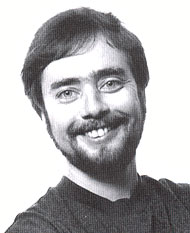
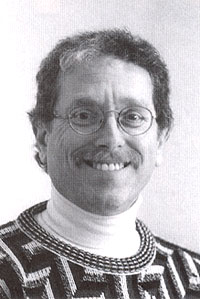
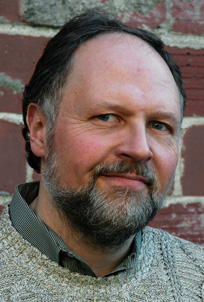
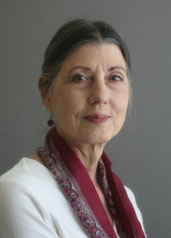 WHEN WE WERE CHILDREN WE HAD A game called a snipe hunt. The game could be played only once on the unwary victim who was stationed in a spot off the beaten path. This "victim" was then told to stay there holding a bag in order to catch the snipe that the rest would be stalking. We were supposed to chase the snipe into the waiting bag. Of course there was no snipe and finally the victim would catch on and come to look for the rest of us who were giggling and playing not too far off. As this is a very old game, it was seldom successfully carried out but was gleefully contemplated as a way of dealing with whoever was considered the neophyte at the time.
WHEN WE WERE CHILDREN WE HAD A game called a snipe hunt. The game could be played only once on the unwary victim who was stationed in a spot off the beaten path. This "victim" was then told to stay there holding a bag in order to catch the snipe that the rest would be stalking. We were supposed to chase the snipe into the waiting bag. Of course there was no snipe and finally the victim would catch on and come to look for the rest of us who were giggling and playing not too far off. As this is a very old game, it was seldom successfully carried out but was gleefully contemplated as a way of dealing with whoever was considered the neophyte at the time.